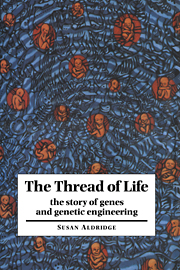6 - Creating new life forms
from PART II - Engineering genes
Published online by Cambridge University Press: 16 March 2010
Summary
When foreign DNA is transferred by genetic engineering to a microbe, plant or animal, a so-called transgenic organism is the result. These new life forms are created for a variety of reasons: to improve on nature, to act as ‘bioreactors’ that make useful products, or to act as models for understanding basic biology.
A transgenic organism usually contains just one gene from another organism within a vast sea of its own DNA. So it is hardly surprising that transgenic sheep, for example, with a gene for a human protein, do not suddenly acquire human faces (or any other noticeably human characteristics). But however reassuringly normal transgenic organisms may appear, they are somewhat different from the creatures that have emerged during the course of evolution.
How radical this difference is depends on your viewpoint. You could argue that humans have been ‘interfering’ in evolution since the dawn of agriculture, with the development of conventional plant and animal breeding, and genetic engineering is just a rather sophisticated breeding technology. You could point to nature's own ‘genetic engineering’ – the spread of antibiotic resistance, the transfer of taxol genes (see p. 74) from the yew to a fungus, and even Griffith's discovery of the transforming principle, to name but three examples. Or you may side with those who regard genetic engineering as deeply suspicious because of the way it allows the setting aside of species barriers.
Inevitably, like any new technology, the creation of transgenic animals raises a number of important issues – animal welfare, environmental and ecosystem concerns and safety.
- Type
- Chapter
- Information
- The Thread of LifeThe Story of Genes and Genetic Engineering, pp. 113 - 136Publisher: Cambridge University PressPrint publication year: 1996



